Standing at the edge of Civitavecchia’s harbor, I felt a sense of awe as the imposing silhouette of Forte Michelangelo emerged from the morning mist. This Renaissance fortress, completed in 1535 during Pope Paulus III’s reign, captures the artistic soul of this historic port city just as much as it once protected it from invaders. The massive structure bears the distinctive marks of Italy’s most renowned architects and artists, revealing a surprising cultural depth to what many travelers simply pass through on their way to Rome.
My first visit to this coastal gem began as a practical stopover but quickly transformed into an unexpected journey through history. Walking along the ancient walls, touching stones laid nearly five centuries ago, I couldn’t help but imagine the countless stories embedded within them. The fortress stands as a proud guardian of Civitavecchia, connecting the modern port with its rich past.
What struck me most about Forte Michelangelo wasn’t just its military might, but how it represents the artistic vision of Renaissance Italy. Beyond this magnificent fortress, the city reveals itself through hidden treasures like the Taurine Baths and the charming old town centered around Piazza Leandra. These places showed me that Civitavecchia isn’t merely a gateway to somewhere else—it’s a destination with its own compelling identity waiting to be discovered.

The Renaissance Genesis of Forte Michelangelo
Standing at the harbor entrance, I was struck by how Forte Michelangelo represents the perfect blend of military necessity and artistic vision that defined Renaissance architecture. This magnificent fortress tells the story of papal ambition, artistic genius, and the ever-present threat of pirate raids that shaped the coastal defenses of 16th century Italy.
Michelangelo’s Influence on Architecture and Sculpture
The fortress was commissioned by Pope Julius II around 1508 and entrusted to the renowned architect Donato Bramante. Walking around its imposing walls, I couldn’t help but notice the distinctive Renaissance features that make it special.
What many visitors don’t realize is that while Michelangelo didn’t design the entire structure, his artistic vision significantly influenced its completion. The upper section, finished in 1535 during Pope Paulus III’s reign, bears Michelangelo’s unmistakable touch.
The massive stone walls slope gently outward at the base—a brilliant defensive feature that also creates a sense of stability and permanence. Four circular towers anchor each corner of the fortress, balancing function with aesthetic harmony in true Renaissance fashion.
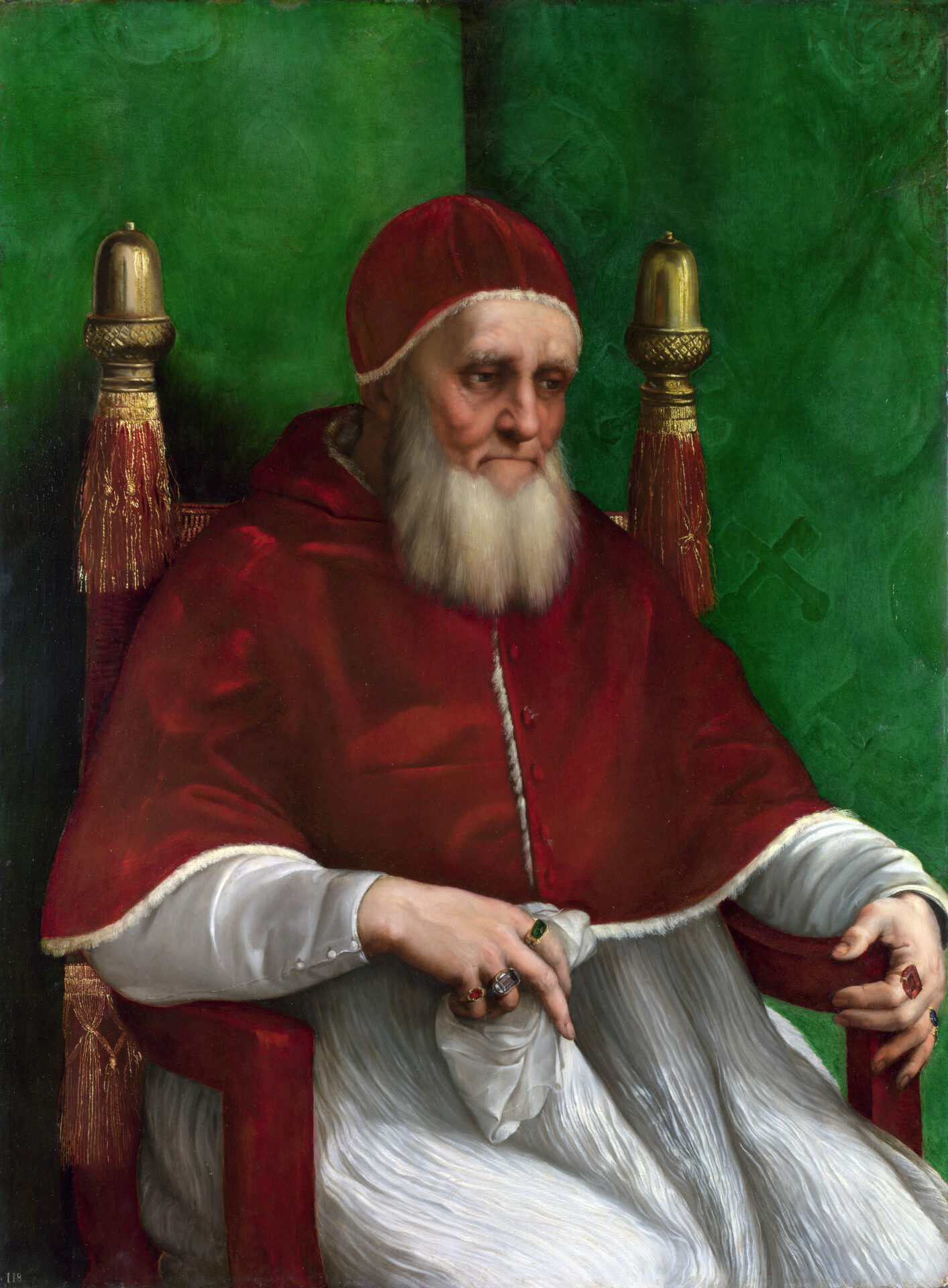
Masterpieces that Shaped the Skyline
The fortress’s crowning glory is its central tower, known as the Maschio. As I circled the structure, I noticed how this tower creates a striking silhouette against the Mediterranean sky.
The attention to proportion and balance throughout the fortress reflects Renaissance ideals perfectly. Every element serves both practical and artistic purposes—an integration of form and function that Michelangelo championed throughout his career.
Large stone blocks form the exterior walls in a rusticated pattern, creating texture and visual interest. This technique, popular during the Renaissance, gives the fortress a sense of solidity while also displaying sophisticated craftsmanship.
Inside, vaulted ceilings and precisely calculated spaces demonstrate the mathematical precision that Renaissance architects applied to their designs.
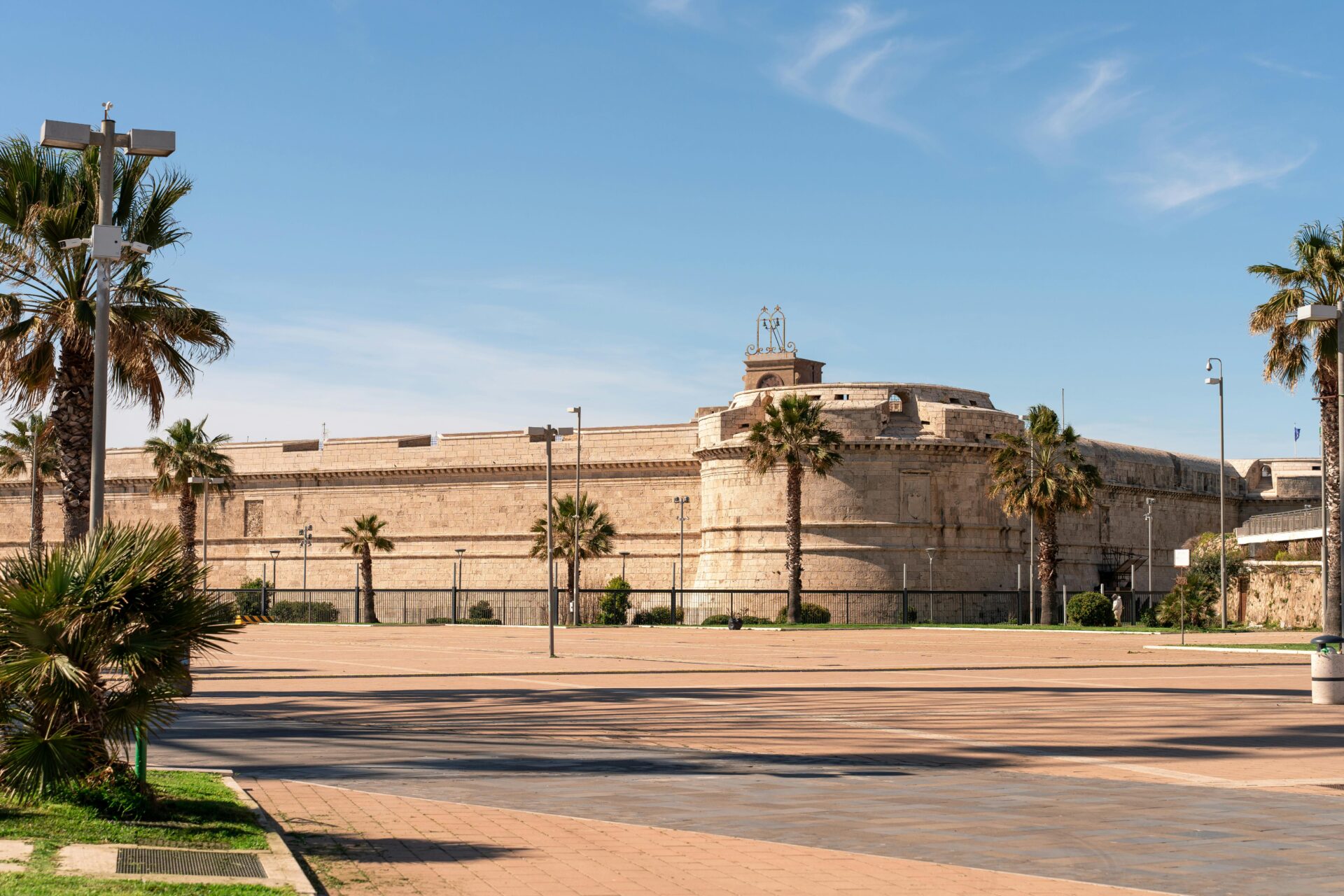
Legacy of the Master in Contemporary Art
Today, Forte Michelangelo stands as more than just a historical landmark—it’s a living connection to Renaissance artistic principles. Local artists often gather in its shadow to sketch and find inspiration.
During my visit, I discovered a small exhibition of contemporary sculptures inside one of the fortress chambers. These modern works deliberately reference Michelangelo’s techniques—particularly his ability to suggest movement within static forms.
The fortress now hosts cultural events that celebrate its artistic heritage. Watching musicians perform within walls designed with Renaissance acoustic principles was a magical experience.
What impressed me most was how the fortress continues to influence Civitavecchia’s identity. Local craftspeople incorporate elements of its design into everything from jewelry to furniture, keeping Michelangelo’s artistic legacy alive in everyday objects.
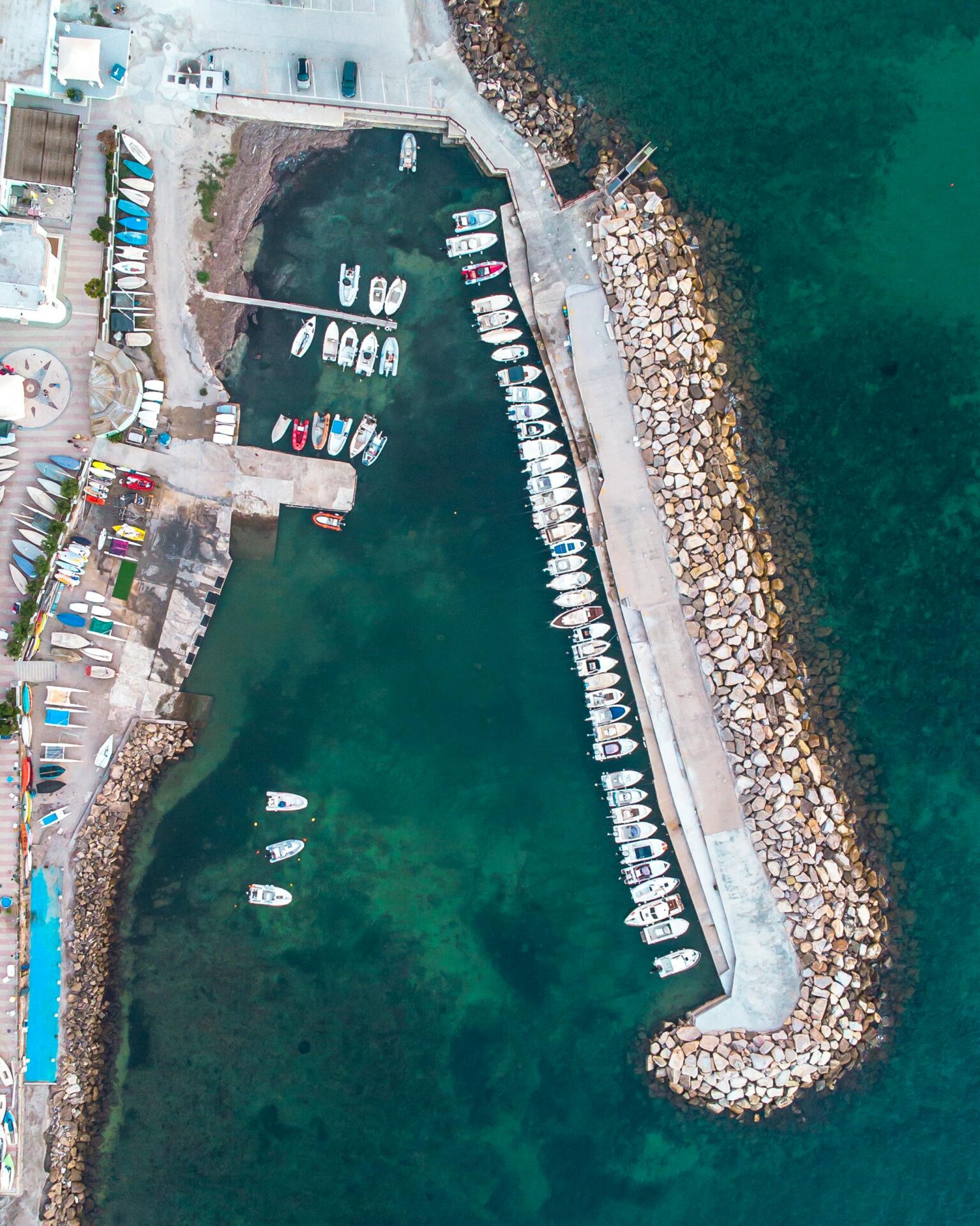
Michelangelo in Our Midst: The Statue of David
Walking through Florence, I found myself drawn to what might be the world’s most famous marble man. David stands as a testament to human creativity, showcasing both artistic brilliance and profound symbolism that continues to captivate visitors centuries after its creation.
A Masterpiece through the Ages
Michelangelo carved his David between 1501 and 1504 after being commissioned by the Opera di Santa Maria del Fiore. I was amazed to learn he was just 26 years old when he began this monumental work. The statue stands at an impressive 17 feet tall, dominating the gallery space.
The original David now resides in Florence’s Accademia Gallery, protected from the elements and crowds of admirers. During my visit, I noticed how Michelangelo cleverly adjusted David’s proportions. His hands appear slightly oversized when viewed up close.
This intentional distortion was designed with viewer perspective in mind. Michelangelo originally intended the statue to be viewed from below, adorning the cathedral.

The Symbolism Behind the Marble
David represents far more than biblical storytelling. As I stood before this towering figure, I felt the powerful political symbolism that resonated with Florentines of the Renaissance era.
The statue embodies the ideal of the citizen-defender, standing vigilant against threats to civic liberty. David’s expression shows determination and concentration before his battle with Goliath.
Michelangelo captured a crucial moment of decision rather than triumph—the moment before action. The contrapposto stance (weight on one leg) creates a sense of potential energy and movement frozen in marble.
I was struck by how David’s calm confidence has made him an enduring symbol of Florence itself. The statue represents the city’s historical view of itself as an underdog defending against larger political powers.
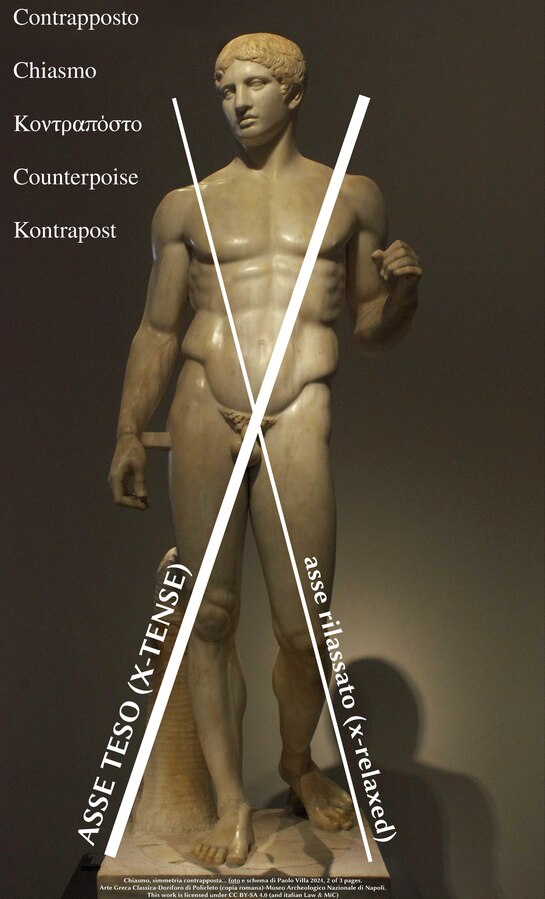
Inspirational Canvases: From Titian to Monet
Walking through Forte Michelangelo, I found myself surrounded by artistic influences spanning centuries, from Renaissance masters to Impressionist pioneers.
Titian’s Artistic Narrative
The Renaissance giant Titian’s presence can be felt throughout this port city. His masterful use of color and light creates a visual narrative that captures both emotion and historical context. During my visit to the local gallery, I was struck by how Titian’s techniques influenced local artists.
Titian traveled extensively in the 16th century, visiting Venice, Florence, and Mantua. These journeys shaped his distinctive style. I learned that he studied with other Renaissance masters, developing his unique approach to portraiture and religious scenes.
What amazed me most was how his bold use of color still feels modern today. The deep reds and blues in his work contrast beautifully with the Mediterranean light that floods the port city’s galleries.
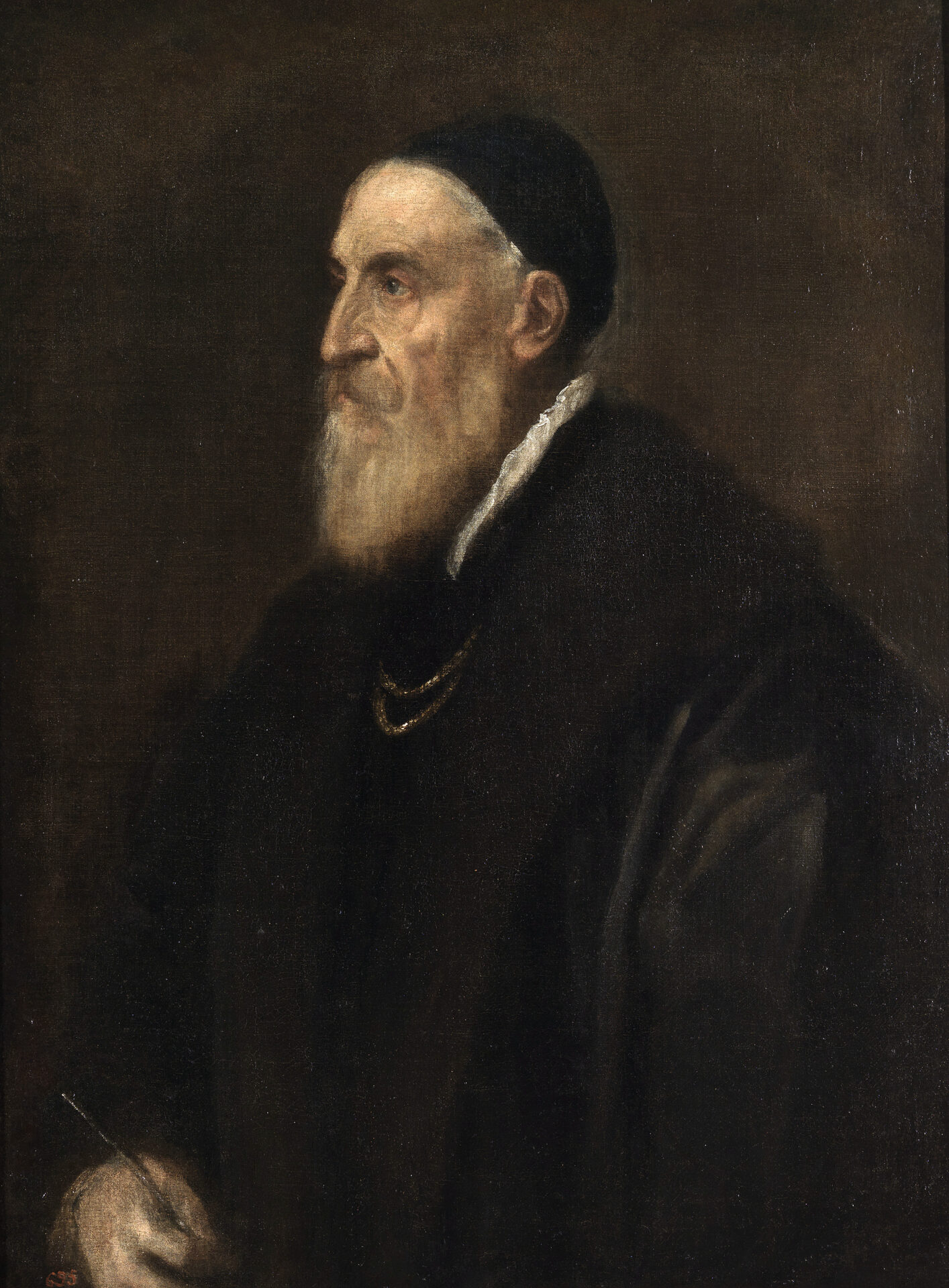
Monet’s Interpretation of Natural Beauty
Monet’s approach to capturing natural beauty offers a striking contrast to Renaissance formality. His impressionist works celebrate light’s fleeting qualities in a way that perfectly complements the shimmering harbor views from Forte Michelangelo.
I spent hours watching how the changing daylight transformed the water’s surface, just as Monet might have done. His technique of capturing momentary impressions rather than detailed realism feels especially relevant when experiencing this coastal landscape.
The local museum features several works inspired by Monet’s approach to nature. These paintings show the port through different seasons and times of day, creating a fascinating dialogue between place and artistic vision.
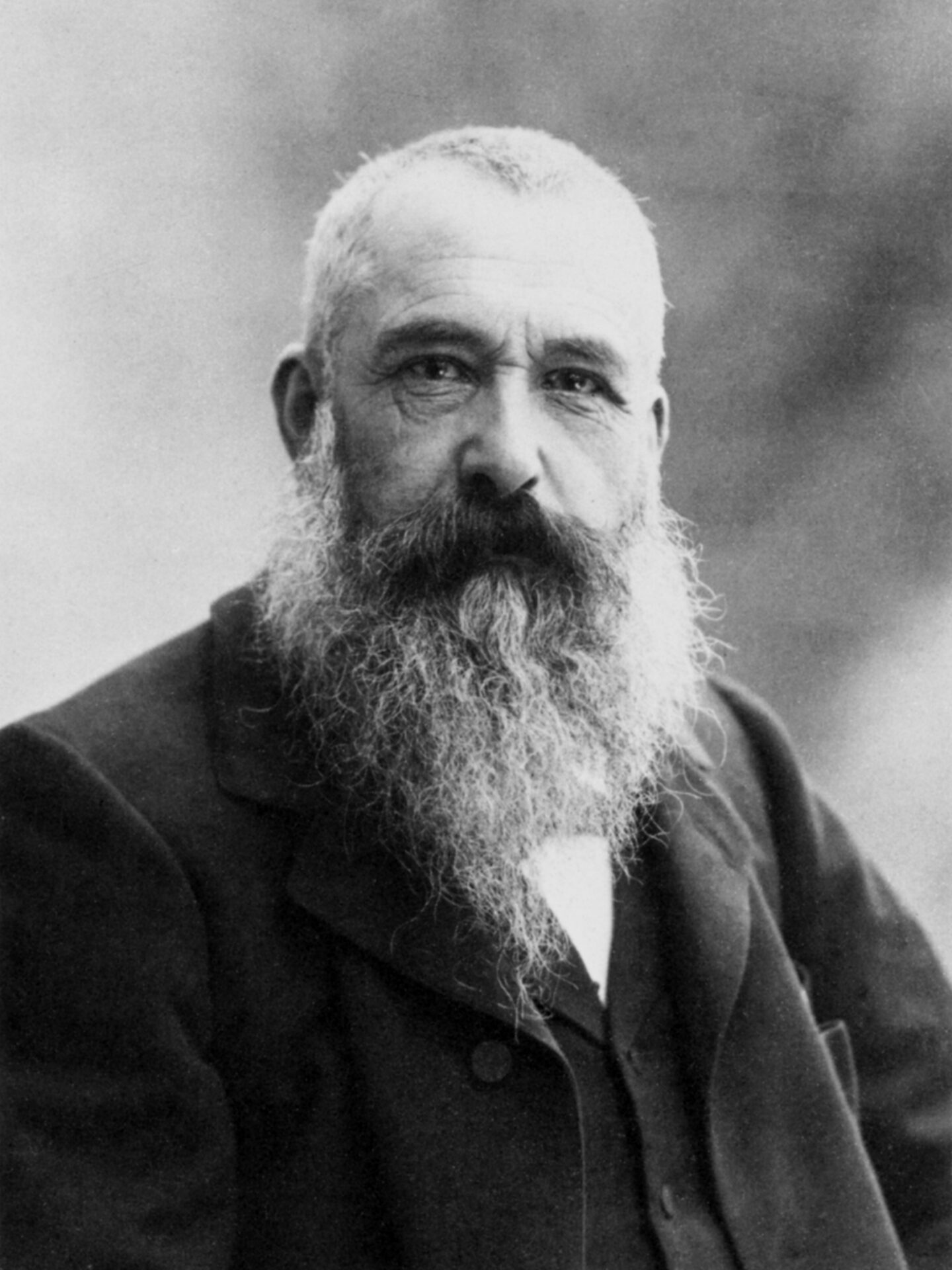
Dialogue Across Eras: The Lasting Conversation
What fascinates me most is the conversation between these artistic approaches across time. Titian’s structured Renaissance compositions speak to Monet’s free-flowing interpretations in unexpected ways.
Both artists, though separated by centuries, shared a profound dedication to capturing light. Walking along the harbor at sunset, I could see both perspectives simultaneously – the structured beauty Titian might have portrayed alongside the ephemeral light effects Monet would have rushed to capture.
Local artists continue this dialogue today, blending traditional techniques with modern interpretations. In the small studios near the fort, I watched contemporary painters reference both masters while creating something entirely new.
This artistic conversation makes Forte Michelangelo not just a historical landmark but a living canvas where art history breathes with each changing tide.
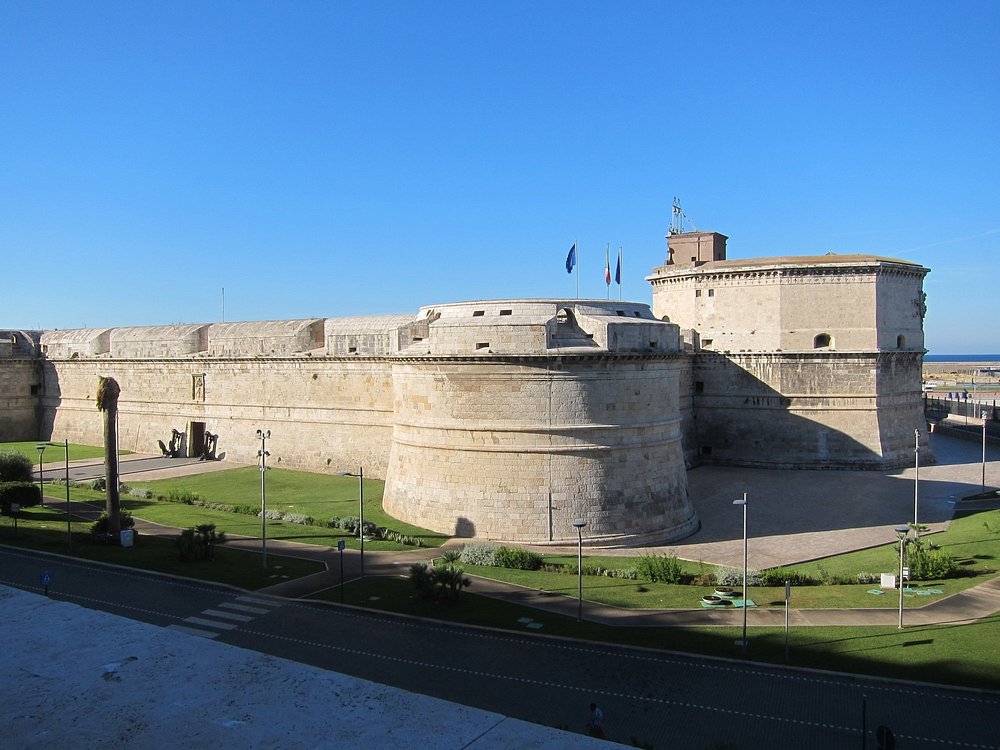
The Church and the Chisel: Vatican Sculpts History
The Vatican’s relationship with Renaissance artists shaped some of history’s most magnificent works. Walking through these sacred halls, I witnessed firsthand how papal patronage transformed marble into masterpieces and walls into windows to the divine.
Raphael and The Vatican Collaboration
Wandering through the Vatican Museums, I was struck by Raphael’s profound impact on this holy city. His collaboration with the Church produced the stunning “Raphael Rooms,” where his fresco “The School of Athens” showcases his genius in blending classical philosophy with Christian theology.
The young artist arrived in Rome around 1508 at Pope Julius II’s invitation. What fascinated me most was how Raphael’s relationship with the Vatican differed from Michelangelo’s more tumultuous one. While Michelangelo often clashed with Church authorities, Raphael maintained smoother collaborations.
His work in the Vatican represents a perfect harmony between artistic vision and religious purpose. The papal apartments he decorated remain some of the most visited areas in Vatican City, where I spent hours admiring his technical precision and storytelling ability.
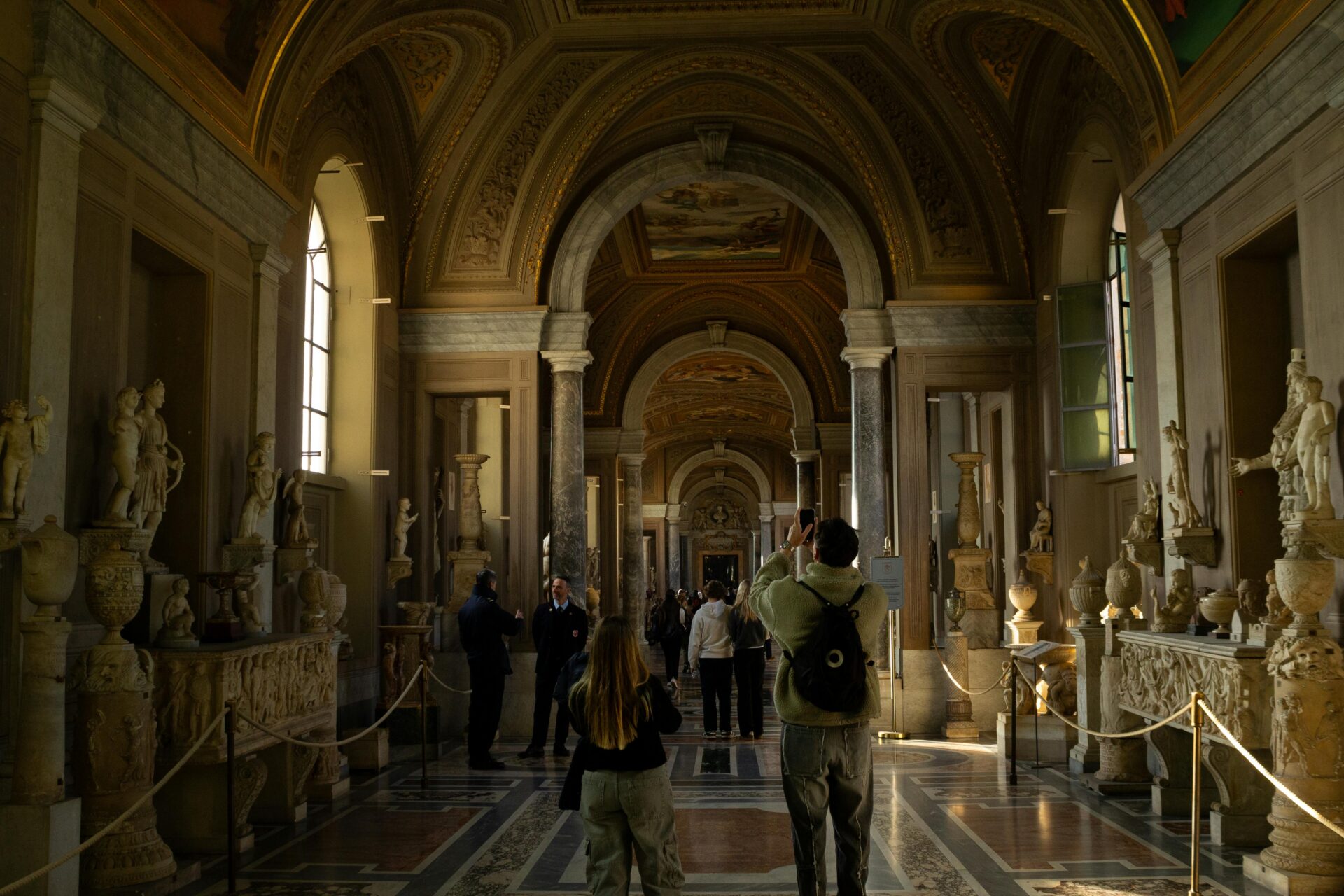
Last Judgment: A Testament of Time
Michelangelo’s “Last Judgment” on the Sistine Chapel’s altar wall left me speechless. Created decades after his famous ceiling, this massive fresco was commissioned by Pope Paul III in 1534 and shows a more mature, contemplative artist.
What many visitors don’t realize is the controversy it sparked. The swirling mass of over 300 figures, many nude, prompted criticism from Church officials. Cardinal Carafa even launched a “fig leaf campaign” to cover the explicit nudity.
Standing beneath this masterpiece, I could feel Michelangelo’s spiritual evolution. His earlier ceiling celebrated humanity’s potential, while this later work confronts our mortality and judgment. The restoration in the 1990s revealed vibrant colors that had been hidden beneath centuries of candle smoke and dirt.

Art History Preserved in Vatican City
The Vatican’s role as guardian of artistic heritage extends far beyond famous names. As I explored its museums, I discovered lesser-known treasures that tell equally compelling stories about faith and creativity.
The Vatican’s conservation efforts impressed me most. Modern technology now helps preserve these fragile works for future generations. In the conservation labs, I watched specialists use advanced imaging techniques to study and restore ancient artifacts.
The Church’s patronage system created a unique environment where artists could pursue ambitious visions. Without papal funding, many iconic works would never have existed. This relationship between power and creativity continues today, with the Vatican still commissioning contemporary religious art.
Digital archives now make these treasures accessible worldwide. I spent hours exploring the Vatican’s online collection before my visit, which enhanced my appreciation when seeing the actual works.
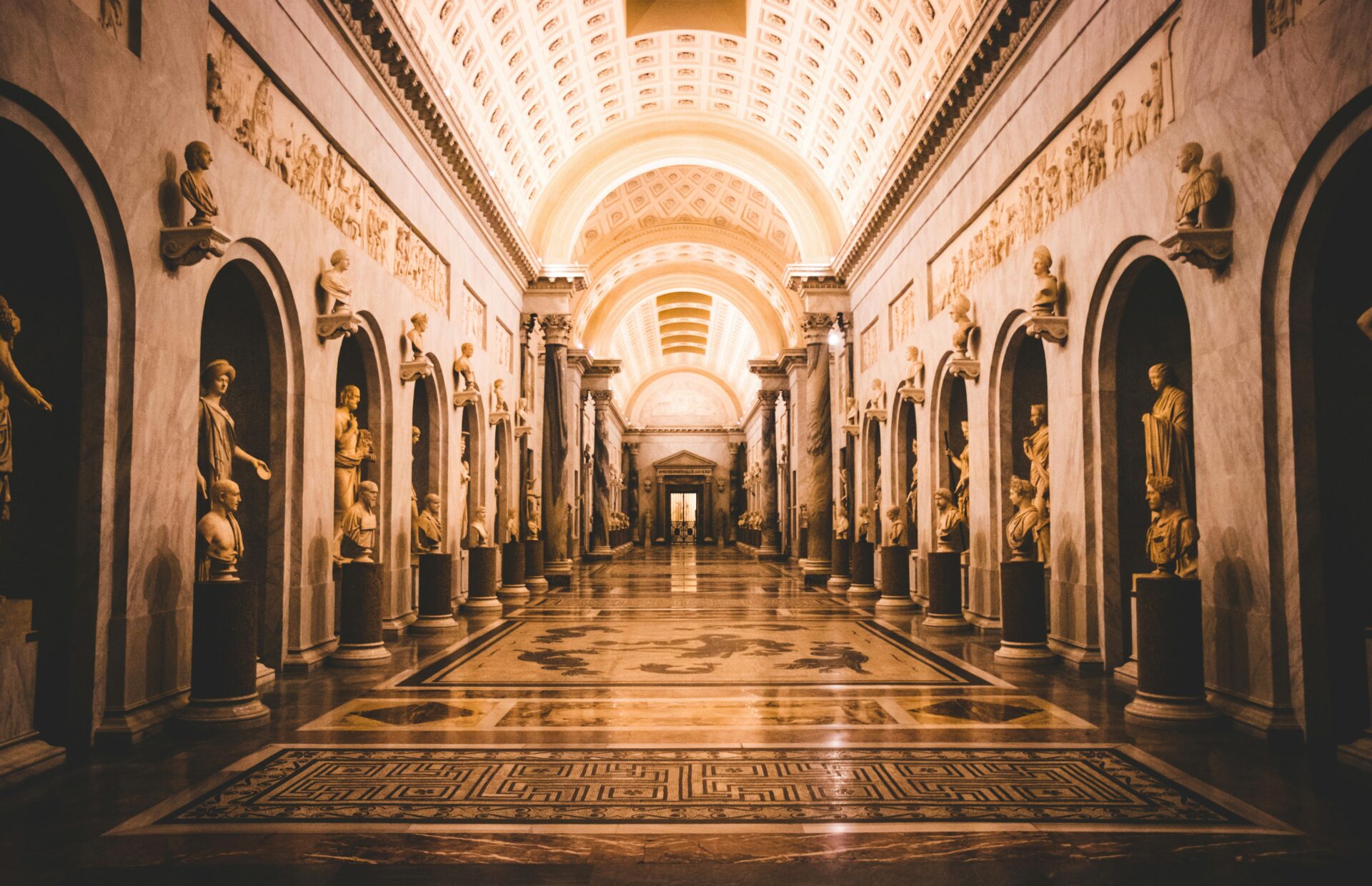
Reflections of Time: Artistic Evolution and Experimentation
Time transforms art just as it changes artists themselves. During my visit to Fort Michelangelo, I found myself contemplating how creative expression evolves through an artist’s lifetime.
The Aging Artist: Michelangelo’s Evolving Craft
Walking through the fortress walls, I couldn’t help but think about Michelangelo’s own artistic journey. His early works like the David showcase perfection in marble, displaying youthful confidence and classical ideals.
But what fascinates me most is how his style transformed with age. His later paintings in the Sistine Chapel reveal a deeper, more complex spiritual vision. The colors grew darker, the figures more twisted and emotional.
Michelangelo elevated the status of artists during his time, valuing artistic freedom above all else. I noticed how his brushwork became looser and more expressive in his final years, particularly in works like The Last Judgment.
This evolution wasn’t weakness but wisdom—a master artist unafraid to experiment even in his seventies and eighties.
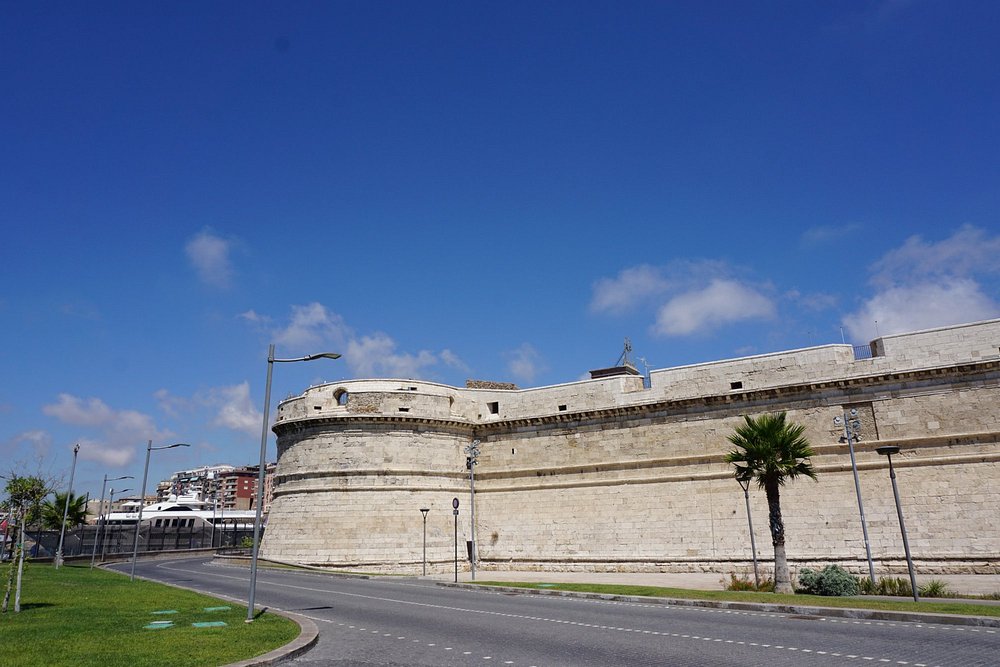
Rembrandt’s Self-Portraits: Introspection and Identity
Standing in Fort Michelangelo’s shadow, I found myself thinking about Rembrandt’s remarkable self-portraits. Unlike Michelangelo, Rembrandt documented his own aging process through art.
His early self-portraits show a confident young man with curly hair and fashionable clothes. Yet as I’ve studied his later works, I’m struck by their unflinching honesty—every wrinkle, sag, and sign of age recorded with brutal honesty.
These paintings aren’t just about physical changes. They capture emotional evolution too—from youthful exuberance to mature introspection. What makes them powerful is their psychological depth.
Through nearly 100 self-portraits, Rembrandt created perhaps the most honest visual autobiography in art history. His willingness to show vulnerability feels surprisingly modern even today.

Biography as Art: Storytelling through Painting
The ancient fortress walls reminded me how artists turn their lives into visual stories. The greatest painters don’t just document what they see—they transform experiences into universal emotions.
Michelangelo infused his personal spiritual struggles into his great works. His Pietà isn’t just religious iconography but a deeply personal meditation on loss and redemption.
I’ve always been fascinated by how artists encode their life stories into seemingly objective scenes. Even commissioned works often contain hidden autobiographical elements—personal symbols, familiar faces, or emotional responses to life events.
The greatest artistic biographies aren’t written but painted. They speak without words, communicating across centuries and cultures. This storytelling aspect of art is what makes visiting places like Fort Michelangelo so powerful—we’re connecting with human stories that transcend time.

